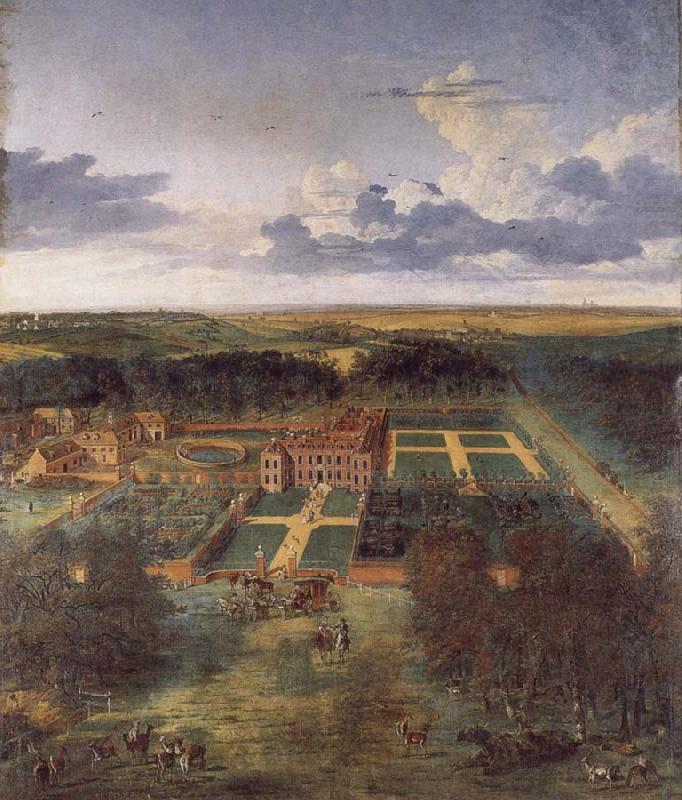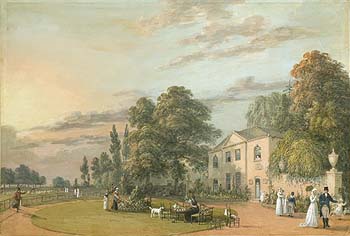The noble houses of eighteenth century England…
…In themselves, or rather in their titles, these men symbolized great accretions of social and political power as well as wealth. They were heads of great clans of families who had served them or depended on them or allied with them for generations. These were thickest where the estates lay; these clients they needed to visit, to entertain, and to impress. The great palace, abbey, or castle in which they passed a few weeks each year remained after their departure as a symbol of their greatness. Furthermore it provided work, hospitality, and sometimes protection, for the estates of these men were the centers of great economic enterprises.

— All Jan Siberechts’s Paintings.
Cheveley Cambridgeshire
mk190 1681 —Read More:http://www.fineart-china.com/htmlimg/image-48526.html
Hidden behind the great rooms of state were the offices of stewards and bailiffs, the meeting ground of merchants, attorneys, agents who drew up the leases, bargained for the timber, farmed the land, let out the mineral rights, and in one of the Duke of Bedford’s houses even sold cloth at the back door. A host of upper servants- stewards of the household, housekeepers, keepers of the chamber, clerks of the kitchens, chaplains, librarians, tutors, governesses, personal servants- all required a host of minor servants to attend to their wants. Many a noble household required five or six great tables to feed the servants; three was quite normal.

—Badminton House Gloucestershire
by Canaletto —Read More:http://www.paintingsoncanvas.net/print-6766-4054460/badminton-house-gloucestershire-giclee-print/
Labor was plentiful and in general cheap in England from the sixteenth to the twentieth century. Sixty,seventy, or even a hundred indoor and outdoor servants were nothing unusual on one estate; if the owner had a passion for gardens and hothouses the number might be doubled. For such hordes not even Blenheim nor Castle Howard nor the stupendous pile of Wentworth Woodhouse were big enough, and the attics were as crowded with servants as the dormitories of army camps. This profusion of servants, like the enormity of the house, was a part of the necessary display, a piece of conspicuous consumption that proclaimed the wealth of the owner.

—Born in 1731, Sandby developed into a prodigious teenage talent, and in the early 1740s he joined the topographical drawing room of the Board of Ordnance at the Tower of London, where he excelled.
a painting of a stately home with formal park in the foreground
(Above) Paul Sandby, Tea at Englefield Green. Nottingham City Museums and Galleries.—Read More:http://www.culture24.org.uk/art/painting%20%26%20drawing/art71023
And as grandeur, so servants bred servants. tasks were fabulously differentiated: one man and one man alone might fill the oil lamps or replenish the candles; even the clocks had their own winder, the servants’ hall became as hieratic as an Oriental despotism, as finely graded in precedence as a state banquet. In order therefore to keep the estate working and to provide the domestic setting that society thought requisite, the servants’ quarters and offices in a noble house doubled the size required for show.





 COMMENTS
COMMENTS